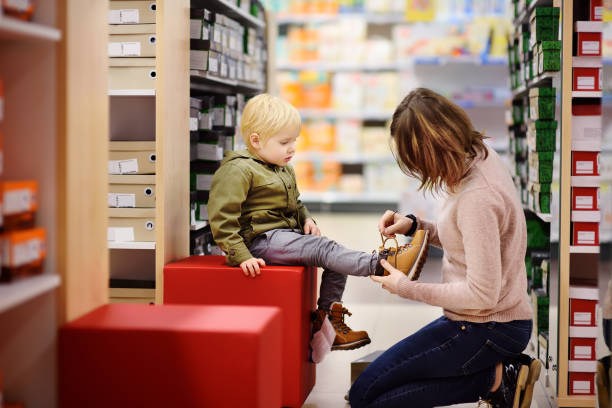Buying children’s shoes can be a real challenge. How do you find the right shoe with sufficient quality? We have compiled the most important information about buying shoes for children and provide an overview of the best providers.
Consequences of wrong footwear
Buying the right children’s shoes is important. Because baby and children’s feet are very flexible. The joints, muscles, and bones of a child’s foot are also not yet solid. Consequently, shoes that are too small or narrow can cause permanent damage to the foot. Studies on children’s feet and children’s shoes have shown that over 60 percent of children between the ages of three and six wear shoes that are too small. And these can lead to curvatures and other consequential damage to the foot and joint area. According to this, foot deformities caused by the wrong shoes are not uncommon in childhood. But by making a conscientious choice when purchasing, you can definitely avoid these consequences.

In contrast to adults, who complain of pain in the front foot or toe area when wearing a shoe that is too small, children can hardly localize such unpleasant pain due to the soft and flexible nature of the child’s foot. If the children’s shoes are too small, the big toes of the child’s foot are no longer in a straight position, but inevitably bend to the side.
At what age does a child need their first shoe?
You should start thinking about buying children’s shoes at the latest when you make your first tentative attempts to walk around the age of ten months. The right footwear serves as protection against cold, dirt, moisture, and hard surfaces outdoors. However, your child does not need shoes in the apartment. In order to protect children’s feet from cold floors in winter, a child’s slipper is completely sufficient.
What should parents consider when buying the right children’s shoes?
Parents can do a lot wrong when buying children’s shoes. It is therefore worth taking the following things to heart and seeking support when choosing a suitable children’s shoe. Consequently, we have summarized the most important tips for children’s shoes:
- Buy children’s shoes in the selected specialist shop.
- Consult trained sales personnel.
- Have your foot professionally measured.
- For children’s shoes, look for a WMS seal (wide, medium, narrow).
- Children’s shoes should provide stable support and be durable.
- Quality children’s shoes are mainly made of natural leather.
- Buy a spare pair to change into so the shoes can air out and dry.
- Regularly buy new children’s shoes.
- Check the size every three to four months as children’s feet grow quickly.
Use cardboard template for buying children’s shoes
Since many shoes do not match the specified size and actual inner length, you can make a cardboard template of the child’s foot. To do this, place your child on a piece of cardboard and outline the edge of the foot with a pen. Add about eleven to twelve millimeters measured from the longest toe. Then cut out the footprint. Then you can insert this useful template into the selected model and thus check the optimal fit. Also, note tips for healthy feet despite foot deformities and how to widen narrow shoes.

What characteristics should a good children’s shoe have?
A good children’s shoe has a flat, flexible, and elastic sole. Thus, the foot is not hindered when rolling. Shoes with a footbed are not suitable for children so as not to impede the natural development of the foot. In order to ensure a stable hold for the ankle, children’s shoes should be equipped with a raised heel cap. Because this protects against painful sprains and keeps the ankle in a natural, fixed position. In addition, the outer and inner materials should be supple and breathable so that the foot does not overheat even on warmer days. Tying shoelaces is still largely impossible for very young children who wear shoes. Therefore, Velcro fasteners offer a simple and quick way to put on and take off. Also, note how you can remove odor from smelly shoes.
